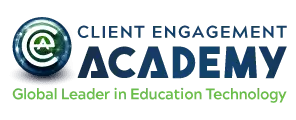
Today’s busy, but knowledge-hungry learners do not mind paying for an online course that they can take at their own pace and in their own time. Enter you, the specialist with the knowledge to share and plenty of industry experience to guide those who want to learn.
But wait! This is not enough to make your prospects stick around and take your course and then come back for more.
In this post, I’m going to walk you through the process I used with my clients in creating six-figure online courses from scratch:
1. Choose a topic that will sell.
It is all about that one stellar idea that will hit the ball out of the park. You may have several great ideas about the topic you want to teach, but to zero in on one, keep the following pointers in mind:
- Brainstorm and list all your ideas.
- Take a look at what your competitors are offering, so you can select topics that will make your course unique compared to other that already exist.
- Figure out what topic motivates you the most. Remember, passion is contagious.
- Make sure that the topic resonates with the audience. More specifically, the topic you choose should address a specific pain point of your audience. (To learn about their pain points, read the comments they post on your blog, the type of posts they like and share, and the questions they pose on forums.)
- Ensure that you craft the topic title such that there is no ambiguity about the theme and focus of your course. In other words, the topic title should spell out the what’s-in-it-for-me information upfront.
2. Define your target audience
Do NOT just build a course and then try and sell it. Carrying out a thorough research on your audience not only helps you create a relevant and meaningful product but also saves you hours and days of costly rework and worse, the frustration of seeing clients never complete your course, or the disappointment that comes from the realization that your product is not helping anybody.
Knowing your audience well will help you get their most significant questions answered in your course.
If you have a mailing list or a focused audience from your social media activities, blog, podcasts, and email newsletters, you can send them a survey to learn about their wants and needs. Be direct and straightforward and just ask them three to five questions to know what is keeping them up at night and what do they think would be the ideal solution.
The following are the other crucial pieces of information you need to gather about your audience:
- Demographic data: This includes their ages, incomes, education, gender
- Pre-existing knowledge and skills of the subject in hand
- What are their attitudes? Values? Lifestyles? Where do they shop?
- Work experience
- How do they learn? Choice of media and formats they prefer
3. Find the “why” (read: the USP) of your course
You need to figure out the why’s of your course before creating it. The answer will help you discover, develop, and deliver exactly what your audience needs. Think of this response as the Unique Selling Proposition (USP) of the course.
So, ask yourself the following questions to figure out the why that will make your audience make a beeline for your course:
- Who am I? How am I qualified to teach what I want to in this course?
- Why will my audience want to listen to me?
- Am I providing a solution to a problem that my target audience has to grapple with routinely? (Read: How will my audience benefit after taking this course?)
- Did my solution help me solve a similar problem? (Read: Am I teaching from practical experience?)
- What motivates you to share your knowledge with the world at large?
4. Define course outcomes
You need to define the overarching learning outcomes of your course. In a nutshell, learning outcomes define what learners will know, feel, and/or be able to DO after they have taken the course.
Knowing the learning outcomes keeps your course focused on your training vision and makes it meaningful and relevant to your audience.
Here’s how you can define the learning outcomes for your course:
- Identify the big picture or the overarching theme of the course.
- Define smaller but more specific learning objectives related to the skills you want to teach to your audience. Think of these smaller learning objectives as the little steps or minute but crucial tasks learners have to carry out before they reach their training goal.
- Phrase the objectives in clear, unambiguous, and simple language. Use measurable verbs.
- State the learning objectives right at the start of the course to establish relevance and drive audience engagement. Learners need to be able to perceive the value of your course to keep up their motivation levels.
5. Plan, prioritize, and organize the content
Now that you have nailed the learning outcomes for your course, your work is cut out. The next step is in determining what and how you’ll put in the course. You’ll need to ensure that your course is meaningful, logical, immersive, and engaging, by keeping in mind the following golden rules:
- Start by creating an outline that will serve as the roadmap when you actually build the course. Your outline can be as basic as a list of bulleted points or an extensive storyboard that details all the lessons, slides, images, and text that will go into the course.
- Make sure that you create the outline while adhering to the overarching learning goals of the course. Each lesson should map to at least one learning objective. Here’s a nifty way to plan your lessons: list all the steps that the learners have to carry out to learn or perform what you need them to, and then turn each of these steps into a lesson.
- From the content list – its time to organize: What order will you teach the content? How you organize is often dependent on the specific content you are teaching – But also is influenced by you, the teacher.
The important thing: ALWAYS Put your learners at the center of the course! This means that you need to step into the shoes of the typical learner, determine his/her learning level (prior knowledge of the subject matter and educational accomplishments); and experience in the workplace. Your learners must be able to wrap their wits around your course. But neither should your course speak down to them. It’s best if there is a set of prerequisite skills needed to master the learning objectives or outcomes.
You’re probably wondering how much content do you need to create to have a successful course? Create a comprehensive course structure without being unnecessarily lengthy. Strike the right balance between providing just the right amount of information—not so much background information that the advanced learners nod off and neither so much technical stuff that beginners drown in the information.
6. Plan each lesson
Planning the lessons ensures you stick to the overarching learning goals of the course. Following this sequence of tasks during the lesson-planning exercise:
- Define and list the learning objectives for each lesson. Do exactly what you had done while outlining the learning outcomes for the course as a whole.
- Create an introduction and highlight the purpose. Ensure that it links back to the previous lesson. Coherence establishes the relevance of what you are about to teach and motivates learners to pay attention. Make a statement regarding the importance of this lesson and define what they will be able to do by the end of the class.
- Plan the body of the lesson. Your plan should include ideas about the activities that you intend to use to present information. Use analogies, case studies, and snippets from your own experiences to make the content realistic and relevant.
- Plan for the assessment activities. Ensure that the activities test the learner’s grasp of the subject per the training goals. Assessment activities help learners figure out how their learning journey is progressing. These activities also let you determine the conceptually challenging portions of the course so that you can present the content accordingly.
- Create a summary. Apart from summarizing the key learning points of the lesson, this section should also lead in and link to the next lesson.
7. Develop the course
After you have your content outlined and lessons planned, you can start recording.
There are many ways to give form to your course. You can present one section entirely with video and another using a mix of media (audio, PDF’s and video).
Here are some essential things you should take into consideration when developing your course:
- Be as visual as you can. Include videos, live demonstrations, and oodles of graphics to convey your message and clarify meaning. For instance, you can appear on the screen to welcome your learners at the beginning of the course and then pop up to introduce each section. We, humans, feel naturally connected to another human being. A talking-head video adds a personal touch to the course and helps you build an instant rapport with your audience. Don’t worry; your video doesn’t need to be Hollywood-standard (but go ahead if you want a pro touch, with a green screen and the like).
- Convey as much of the content as you can through video. Moving images are engaging and remove ambiguity from the content, thereby making your course instructionally more effective.
- Whatever be the format of the content you use, keep the less-is-more rule in mind. Too much content is overwhelming; besides your busy learners do not have the time to go through all that you have put up. Load your course ONLY with relevant content, so it is meaningful to your audience and learning is a breeze.
8. Develop a brand identity for your course and roll it out
Now that you have built your course, it is time to put it out there. You have waited for this moment for so long!
Here’s a disclaimer: Your course is not just about you. You have to market your course, not yourself. And the most fool-proof way to stand out from the competition is to develop a unique brand identity for your course.
Ensure that your course’s brand stirs the heartstrings of your audience and resonates with their beliefs and ideals. The brand identity you create should send out the right vibes (It should “feel” right.) to your audience and stir desire in them to consume your product.
Like any other venture, launching an online course and making a profit from your expertise and efforts require many hours of hard work. What you also require is to follow a tried-and-tested strategy and avoid the pitfalls.

Recent Comments